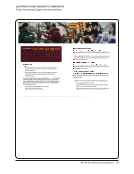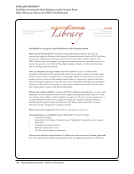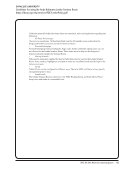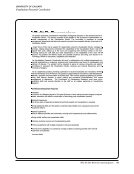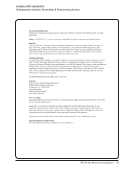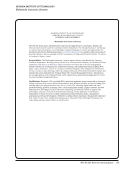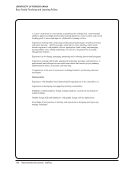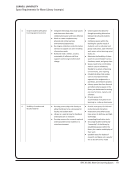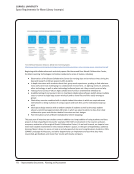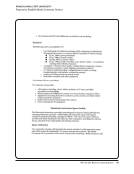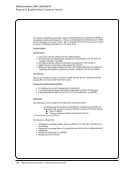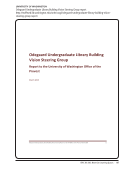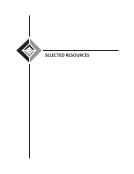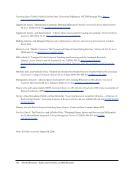12 · Survey Results: Executive Summary
time. The survey asked what the drivers or motivating
factors were for these spatial changes, and 58 (83%)
responded that feedback, both internal and external
to the library, factored into the decision-making pro-
cess for library reconfiguration. A funding opportu-
nity was cited by 41 of the libraries (59%) as a reason
for physical changes. It’s also important to note that
several institutions indicated their organizational
structure factored heavily into these decisions. For
example, libraries with multiple branches may ap-
proach the physical changes of each branch location
differently and for varying reasons.
When asking for examples of what libraries con-
sider Next-Gen learning activities, it may not be sur-
prising to hear the most commonly used descriptive
term in our responses was collaboration or a varia-
tion of such (25 times). Librarians are natural “connec-
tors” between users and the information or resources
they need. Librarians are also good at connecting
people from diverse disciplines and working collab-
oratively with them. Collaboration is at the center of
Next-Gen learning spaces, and collaborative spaces
come in many forms, not just high-energy activity
centered space, but also quiet space for users to re-
flect, research, and share ideas and information. Next-
Gen space goes beyond “renting out library space” to
campus organizations or users. Through Next-Gen
spaces, the library is a full partner in the creation
and use of the space. Librarians help create the con-
tent, introduce new technologies, and design new
instructional methods or programs. From Multimedia
Design Centers and specialized classrooms to Digital
Scholarship centers, librarians are finding ways to
enhance their users’ experience through the library
and partner with academic researchers. These spaces
encourage cross-disciplinary activities and are de-
signed with new pedagogies in mind. Librarians can
also help with the development and preservation of
scholarly output.
Services, Staff, Collections, and Transactions
Next-Gen learning spaces are not only enhancing the
users’ experience, but they are also encouraging pro-
fessional growth in librarianship. New positions are
being created and librarians are experiencing chang-
ing responsibilities. Survey results indicate that 86%
of the respondents have added services as a result of
development in learning spaces. The data also indi-
cates librarians are learning new skills and adapting
to new roles in these learning spaces. Traditional refer-
ence services are often being restructured, combined,
or in some cases eliminated, while librarians special-
ize in new research technologies. Examples of new
services include developing visualization services
in a Digital Scholarship Lab, hosting technology &
research-centered conferences, teaching 3D modeling,
or integrating with academic writing centers.
Learning spaces and collections are directly con-
nected. In many cases, the new services and programs
in learning spaces have resulted in significant chang-
es to traditional library collections. Approximately
89% of 70 survey respondents stated their collection
was moved within the library as a result of learning
space development, 71% reported their collection was
moved to an off-site facility as a result of changes in
learning spaces, 86% weeded their collection, 57%
were influenced to make some transition from print
to electronic resources, and 21% began collecting in
new areas as a result of their learning spaces. Some
libraries indicated that the changes in collections were
also influencing decisions related to the discovery
mechanisms for their library resources.
In general, it seems library traffic and transactions
have increased as a result of learning spaces. Survey
data reflects that 75% of the responding libraries (53 of
71) experienced an increase in library gate counts and
35% experienced an increase in web traffic related to
learning spaces. Of these respondents, however, most
indicated that circulation transactions were about the
same (19) or had decreased (16), and reference trans-
actions had decreased (19) or also stayed about the
same (18). Most respondents stated that library hours
had increased. Linking causality between learning
spaces and traffic/transactions may be difficult in
some cases since data collection methods for some
institutions changed over time or had not been col-
lected long enough for consistent measureable results.
Additionally, it was interesting to note that while ref-
erence transactions appeared to be decreasing, some
institutions indicated that related services such as
e-resources and library instruction requests were in-
creasing substantially.
time. The survey asked what the drivers or motivating
factors were for these spatial changes, and 58 (83%)
responded that feedback, both internal and external
to the library, factored into the decision-making pro-
cess for library reconfiguration. A funding opportu-
nity was cited by 41 of the libraries (59%) as a reason
for physical changes. It’s also important to note that
several institutions indicated their organizational
structure factored heavily into these decisions. For
example, libraries with multiple branches may ap-
proach the physical changes of each branch location
differently and for varying reasons.
When asking for examples of what libraries con-
sider Next-Gen learning activities, it may not be sur-
prising to hear the most commonly used descriptive
term in our responses was collaboration or a varia-
tion of such (25 times). Librarians are natural “connec-
tors” between users and the information or resources
they need. Librarians are also good at connecting
people from diverse disciplines and working collab-
oratively with them. Collaboration is at the center of
Next-Gen learning spaces, and collaborative spaces
come in many forms, not just high-energy activity
centered space, but also quiet space for users to re-
flect, research, and share ideas and information. Next-
Gen space goes beyond “renting out library space” to
campus organizations or users. Through Next-Gen
spaces, the library is a full partner in the creation
and use of the space. Librarians help create the con-
tent, introduce new technologies, and design new
instructional methods or programs. From Multimedia
Design Centers and specialized classrooms to Digital
Scholarship centers, librarians are finding ways to
enhance their users’ experience through the library
and partner with academic researchers. These spaces
encourage cross-disciplinary activities and are de-
signed with new pedagogies in mind. Librarians can
also help with the development and preservation of
scholarly output.
Services, Staff, Collections, and Transactions
Next-Gen learning spaces are not only enhancing the
users’ experience, but they are also encouraging pro-
fessional growth in librarianship. New positions are
being created and librarians are experiencing chang-
ing responsibilities. Survey results indicate that 86%
of the respondents have added services as a result of
development in learning spaces. The data also indi-
cates librarians are learning new skills and adapting
to new roles in these learning spaces. Traditional refer-
ence services are often being restructured, combined,
or in some cases eliminated, while librarians special-
ize in new research technologies. Examples of new
services include developing visualization services
in a Digital Scholarship Lab, hosting technology &
research-centered conferences, teaching 3D modeling,
or integrating with academic writing centers.
Learning spaces and collections are directly con-
nected. In many cases, the new services and programs
in learning spaces have resulted in significant chang-
es to traditional library collections. Approximately
89% of 70 survey respondents stated their collection
was moved within the library as a result of learning
space development, 71% reported their collection was
moved to an off-site facility as a result of changes in
learning spaces, 86% weeded their collection, 57%
were influenced to make some transition from print
to electronic resources, and 21% began collecting in
new areas as a result of their learning spaces. Some
libraries indicated that the changes in collections were
also influencing decisions related to the discovery
mechanisms for their library resources.
In general, it seems library traffic and transactions
have increased as a result of learning spaces. Survey
data reflects that 75% of the responding libraries (53 of
71) experienced an increase in library gate counts and
35% experienced an increase in web traffic related to
learning spaces. Of these respondents, however, most
indicated that circulation transactions were about the
same (19) or had decreased (16), and reference trans-
actions had decreased (19) or also stayed about the
same (18). Most respondents stated that library hours
had increased. Linking causality between learning
spaces and traffic/transactions may be difficult in
some cases since data collection methods for some
institutions changed over time or had not been col-
lected long enough for consistent measureable results.
Additionally, it was interesting to note that while ref-
erence transactions appeared to be decreasing, some
institutions indicated that related services such as
e-resources and library instruction requests were in-
creasing substantially.









































































































































